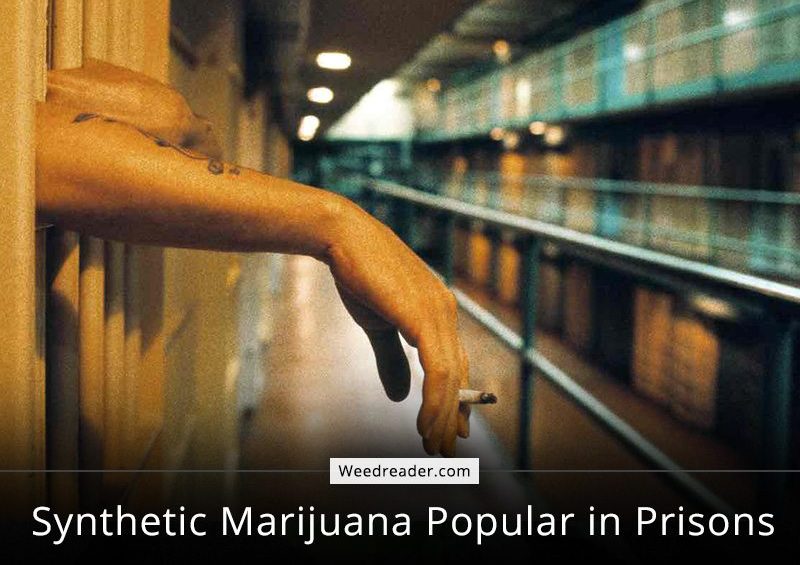Synthetic Marijuana is becoming a popular drug in U.S. prisons.
Synthetic marijuana has taken over the prison market for a few big reasons. First, it is easier to smuggle into prisons than most other drugs. Because synthetic marijuana doesn’t show up in tests, inmates find it easier to hide use.
The punishment for those who are caught with synthetic weed is also less severe than getting caught with other drugs. Synthetic weed isn’t all good though.Early results show that consuming synthetic marijuana may pose a health hazard but that hasn’t stopped inmates.
Synthetic Marijuana is easy to smuggle in prisons.
Tiny packs of synthetic marijuana that resemble tea-bags can be purchased under a variety of names. Many names don’t reflect that they are cannabis products. Names like Spice and K2 help inmates fly under the radar with potential contraband.
These little packs are shredded vegetable material coated with THC extracts which can easily be snuck to inmates. Soaking pieces of paper with THC is another popular method of sneaking in marijuana but won’t pass drug screening. The soaked pieces of paper are disguised as letters to inmates, which are rolled up and smoked (or eaten) without alerting guards until a drug test.
Passing random drug tests is another reason to go synthetic.
Another reason inmates prefer to smoke synthetic weed is because it is one of only a few substances that won’t come up in any of their test results. Prison urinalysis drug tests for alcohol, amphetamines, barbiturates, cocaine, codeine, marijuana (THC specifically), methadone, opiates and phencyclidine (PCP). Although marijuana comes up in prison urinalysis drug tests, synthetic marijuana does not.
Even if caught using synthetic marijuana, punishment is light.
When prisoners are caught with synthetic marijuana in their possession,they can expect a slap on the wrist and a note on their record. Inmates who are caught with actual weed, alcohol or any other drugs face harsh penalties. Penalties can include losing phone privileges for a year, up to 60 days in segregation, loss of good time. Penalties can even include limiting visitation rights or even halting them for a period.
How do people get access to synthetic weed?
Synthetic marijuana can be legally purchased by the public in sealed packages that look like standard sized tea-bags. Synthetic weed can also be made without the use of sophisticated lab equipment. Nor does it require you to be a Heisenberg. Basically, anyone can make synthetic weed at home. After all, the most basic synthetic weed is just shredded plant material (paper) coated with THC juice.
Synthetic weed is not safe to use, especially compared to regular marijuana.
Smoking a letter from “Grandpa Purps” is not the healthiest way to get your fix. The unregulated use of synthetic weed is potentially dangerous. People are getting sick from smoking unknown chemicals (like those found in ink) in addition to using unsafe methods of consumption.
The reported side effects of synthetic marijuana include mental agitation, rapid heartbeat, drowsiness, vomiting and confusion. The Center for Disease Control and Prevention (CDC) reported that in several cases, life-threatening and substantial lasting effects were documented. Researchers have also found that synthetic weed increases suicidal thoughts.
Even star athletes have succumbed to the negative side effects of synthetic marijuana. Former NFL player Aaron Hernandez committed suicide while in a state prison. The inmates, guards and autopsy reported that Aaron’s habitual use of synthetic weed caused his suicidal behavior.
The synthetic marijuana in prison crisis is another example of why marijuana needs to become federally legal. Once marijuana is moved from being a schedule I drug, then inmates who can have access to tobacco may also have access to marijuana. Thus not needing to suffer needlessly.
Photograph: Jim Havey / Alamy/Alamy





